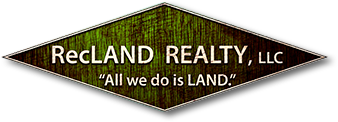One result of land segmentation is more and more land boundaries. Disputes among adjoining landowners are increasing. Boundary trees are often at the center of the dispute. Our law has one set of rules applicable to trees and plants growing on the boundary and another set of rules applicable to trees growing on neighboring property near the boundary but whose roots and limbs extend over the boundary. La. C.C., Art. 687 and 688.
TREES GROWING ON THE BOUNDARY
Trees and other plants growing “on” the boundary are those in which the boundary line passes through the trunk. A tree may initially not be a boundary tree but, over many years of growth, grows into the boundary and, thus, becomes a boundary tree. Once a determination is made that the tree or plant is a boundary tree, the first consequence is that the tree is co-owned, with each adjoining property owner owning an undivided interest in the tree or other plant.
Sometimes a tree growing on the boundary causes a problem for one of the adjoining co-owners and not the other. For example, assume a 150 year old beautiful live oak tree is a tree through which the boundary line passes. However, its branches and roots, through no fault of either co-owner, are encroaching upon and doing serious damage to the foundation of a home belonging to one of the co-owners. May the co-owner who is being damaged demand that the other co-owner remove the tree? Short answer: No. Our law provides that the co-owner who is being damaged has the right to remove co-owned trees that are causing damage, but he must bear the entire expense of removal of the co-owned tree. The party being damaged does not have a claim for damages against the other co-owner. The entire cost of the removal, and all damage resulting from the removal, must be borne by the co-owner who was initially damaged by the co-owned tree. Neither the expense of the removal nor the damage may be shifted to the adjoining co-owner. However, neither can the adjoining co-owner collect damages for his loss due to the removal of the beautiful tree.
Another question that arises in the context of a boundary of commercial timberland is the status of trees along the boundary. These trees are also co-owned. Any boundary that passes through a tree is a boundary tree and, accordingly, co-owned by the adjoining property owners. One question that arises is whether or not one of the co-owners has a right to cut the boundary tree without the permission and consent of the other co-owner. The answer is no. Any cutting, removal or even damage to a boundary tree would invoke the treble damage statute and expose the wrongdoer to the payment of three (3) times the value of the tree and attorney fees. Further, if the boundary tree has been “marked” and provides evidence of the boundary (so-called “line tree”) then the unconsented cutting may expose the wrongdoer to even greater damages than would be due under the treble damage statute. The removal of a marked line tree may necessitate an expensive survey to re-establish the boundary, the cost of which may be greater than treble damages. Thus, landowners cutting or operating near a boundary should take precautions to make sure no trees on the boundary are cut or damaged without the consent of the adjoining landowner.
TREES GROWING NEAR THE BOUNDARY
Many tree trunks are located entirely on one landowner’s property, but near the boundary. Roots and branches of trees growing near a boundary usually protrude over the boundary into property owned by another. What are the duties and obligations of the adjoining landowners? An example with illustrate.
Assume a large magnolia tree is growing entirely on property owned by Mr. Jones. However, the roots of the magnolia tree have grown across the boundary and protrude into Mr. Smith’s property. The roots are now interfering with the foundation and plumbing of Mr. Smith’s home. What can Mr. Smith do to mitigate this problem? In this case, Mr. Smith has the right demand that Mr. Jones remove the roots and branches that extend onto Smith’s property and are actually causing damages to Smith’s property. However, Smith does not have the right to demand the removal of the roots or branches unless they are causing an actual problem. A landowner does not have the right to demand removal, at the adjoining landowner’s expense, unless the protrusions are actually interfering with the use of his property. A landowner does not have the right, even at his own expense, to cut either branches or roots at the boundary unless the protrusions are causing him actual damages.
What if a pecan tree trunk is growing entirely on Mr. Jones’ property but whose branches overhang onto Mr. Smith’s property? Neither the roots nor the branches are causing any actual damage to Mr. Smith. However, Mr. Smith asserts that he is the owner of all pecans that fall on his side of the boundary. Can Mr. Smith keep the pecans that fall to earth on Smith’s side of the boundary? Although there is no case or statute directly on point, it is believed that Mr. Jones, as the sole and only owner of the tree and all of its fruit, would be entitled to all of the pecan crop, even those falling beyond the boundary. Mr. Jones is believed to have a limited right of trespass in order to recover his pecan crop but without damage to Smith’s property.
SUMMARY
Trees or other plants growing on or near a boundary are frequently the source of disputes among adjoining landowners. Disputes among adjoining landowners arising from tree or other plant growth are more frequent as more and more people live closer and closer together and tracts of land are segmented into smaller and smaller parcels. If such a problem arises, consult legal counsel if the problem cannot be amicably resolved.
Authored by Paul D. Spillers, Attorney
Theus, Grisham, Davis & Leigh, LLP
3139 Mercedes Drive
Monroe, Louisiana 71201
318-388-0100, Ext. 18
*** Mr. Spillers has been a client of RecLand Realty, is a landowner and is active in the forestry industry in the south. www.RecLand.net








